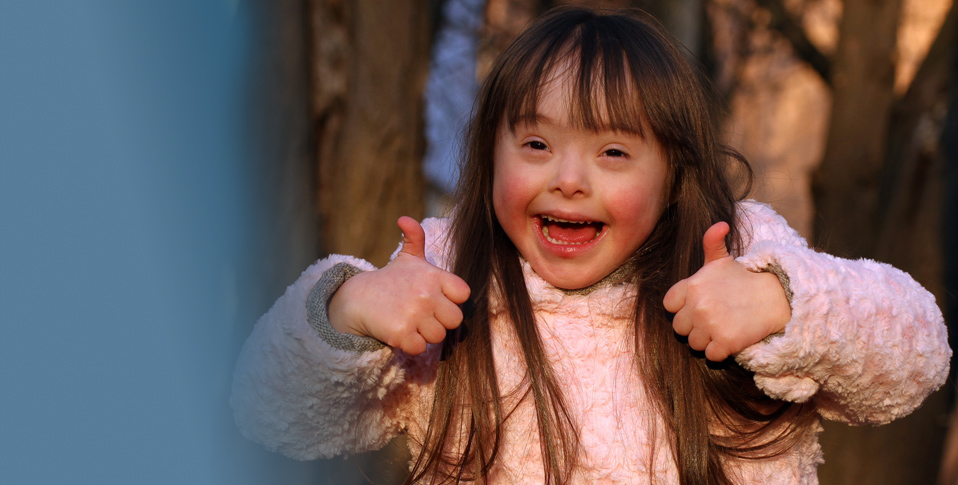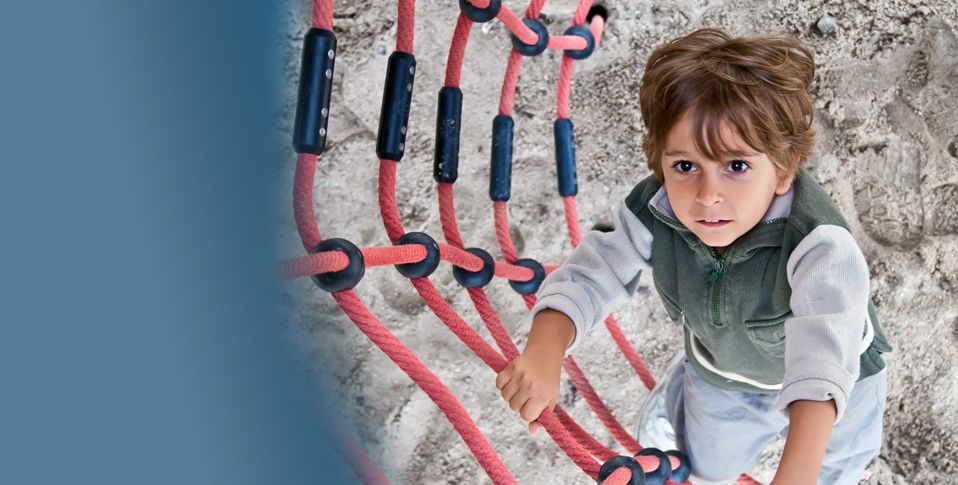Frequently Asked Questions
GENERAL:
What is Positive Behavioral Interventions and Supports (PBIS)?
Positive Behavioral Interventions and Supports (PBIS) is the application of behavior analysis to achieve socially important behavior change. PBIS was developed initially as an alternative to aversive interventions that were used with students with severe disabilities who engaged in extreme forms of self-injury and aggression (Durand & Carr, 1985; Meyer & Evans, 1989). More recently, the technology has been applied successfully with a wide range of students, in a wide range of contexts (Carr et al., in press; Horner, Albin, & O'Neill, 1991), and extended from an intervention approach for individual students to an intervention approach for entire schools (Colvin, Sugai, Good, & Lee, 1996; Colvin, Kame'enui & Sugai, 1993; Lewis, Colvin, & Sugai, in press; Lewis, Sugai & Colvin, 1998; Taylor-Greene, et al., 1997; Todd, Horner, Sugai, Sprague, 1999; Sugai, Sprague, Horner, Walker, in press).
Positive Behavioral Interventions and Supports is not a new intervention package, nor a new theory of behavior. Instead, it is an application of a behaviorally-based systems approach to enhance the capacity of schools, families, and communities to design effective environments that improve the fit or link between research-validated practices and the environments in which teaching and learning occurs. Attention is focused on creating and sustaining school environments that improve lifestyle results (personal, health, social, family, work, recreation, etc.) for all children and youth by making problem behavior less effective, efficient, and relevant, and desired behavior more functional. In addition, the use of culturally appropriate interventions is emphasized. Haring and De Vault (1996) indicate that PBIS is comprised of (a) "interventions that consider the contexts within which the behavior occurs"; (b) "interventions that address the functionality of the problem behavior"; (c) "interventions that can be justified by the outcomes"; and (d) "outcomes that are acceptable to the individual, the family, and the supportive community" (p. 116). PBIS is an effective method for increasing school safety, enhancing studentsí social-behavioral skills, and creating a more positive school climate.
What is the Difference between PBIS, PBIS, and EBS?
PBIS is the same as PBIS and EBS. PBIS stands for Positive Behavioral Interventions and Strategies and EBS stand for Effective Behavior Supports and both are alternative terms used to identify PBIS. These terms can be used interchangeably, yet most states tend to favor the terms PBIS or PBIS.
What does PBIS have to do with the Law?
There are some state laws incorporating positive behavioral support features, and mental health statutes in various states regulate interventions that can be used and occasionally deal with positive support. The reauthorized IDEA contains two specific provisions related to positive behavioral support. One provision requires students' Individualized Education Plan (IEP) teams (which now includes the students' parents) to consider using positive behavioral support whenever a student's behavior gets in the way of that student's own ability to learn or the ability of other students to learn. The other provision requires the IEP team to assure, within 10 days after student has been disciplined, that the student will receive a functional assessment of behavior and a behavioral intervention plan (if the student does not already have one). If there is a plan in place, the IEP team will review and revise it.
If the building principal doesnít lead the PBIS Team or the implementation of Positive Behavioral Interventions and Supports, then what is his or her role?
Schools that have implemented PBIS rely heavily on team-based decision making. This increases program stability over time, reduces the criticism that discipline policies are simply administrator driven, and improves the quality of decisions. Although the building administrator does not facilitate the behavior team, her/his role is a vital one on the team and in the systems change process. Most importantly, the principal "sets the tone" in the building, and indicates what is valued and the course of action that will be pursued. As a critical member of the PBIS team the administrator represents the interests and concerns of the district, guides in issue of law and policy, accesses resources and removes roadblocks so that the team can carry out its important mission. Schools and school teams are rarely successful without strong, positive leadership from the building administrator.
How do I go about selecting behavioral interventions for my students and school?
One of the wonderful features of a ìPBIS Schoolî is that the teachers do not operate in isolation as is typical in many schools. Thus, the selection of interventions and programs is often done collaboratively by a school team as part of creating a broader system of behavioral supports. In the review and selection process, the team will (1) clearly identify the problem they wish to resolve or the goal they wish to achieve, (2) review the research literature to see what interventions have ìempirical supportî or evidence of effectiveness in addressing the issue, and (3) develop a plan to implement and evaluate the intervention in their setting.
While many programs or curricula claim to be "research based," the quality of evidence supporting these interventions may range from testimonials and newspaper stories to well- controlled experimental designs with treatment and control groups. Because there is such frequent misuse of the term "research based," many educators have come to believe that research can say anything you want it to say, and that research is of no value in education. This is a dangerous position that can lead educators to use intervention strategies that allow students to fail, when effective interventions are readily available. In much the same way physicians evaluate medical treatments based on "levels of evidence" supporting their efficacy, educators can evaluate educational ìtreatmentsî and select those that are most likely to be effective with their students.
Several organizations have evaluated the research literature and provided lists of programs that have been shown to be effective in well-designed research. For example: The U.S. Department of Justice, Office of Juvenile Justice & Delinquency Prevention Program lists "exemplary", "effective" or "promising" programs. The Promising Practices Network lists "promising and proven" interventions.
Where can I find out more about PBIS?
Many articles, data sheets and other resources can be found at www.pbis.org. For more information about PBIS and related interventions, please refer to the website above and the links page under the Resources section of this website.
Who can help me do it?
In California, contact Barbara Kelley, State PBIS Coordinator at This email address is being protected from spambots. You need JavaScript enabled to view it. . If you live outside California, consult www.pbis.org for information of who the contact person in is your state.
SCHOOL-WIDE:
What will PBIS look like at our school?
A school-based team consisting of representative members of administration, faculty and staff on campus will develop, implement, and monitor the school-wide PBIS Plan. This team will regularly (at least monthly) review the discipline data to help track progress, identify areas to target for intervention across campus, and communicate these findings and plans for intervention across campus. The discipline referral process and procedures will be consistent throughout the school and effective consequences will be used to discourage inappropriate behavior. The school will have identified and posted expectations and rules in specific settings used to teach students the expected (appropriate) behavior. A reward system (or incentives program) will be utilized to encourage and model appropriate behavior.
How is PBIS a process?
PBIS is not a packaged program with a set script. There are critical components (briefly mentioned above) that help identify schools that are engaged in School-wide PBIS. These components look different in every school because PBIS is a PROCESS that is individualized to meet the specific needs of each school. That process is always changing to meet these specific needs of the school (e.g., population changes, maintain interest or buy-in, address multiple levels of problem behavior, etc.).
How is PBIS collaborative?
A core team is formed and is representative of the entire staff of the school. The team receives training on each component of PBIS and pulls together ideas that meet the specific needs of their school. The teamís ideas are presented to the rest of the staff and students for feedback, editing, and consensus on the plan. All members of the school contribute to the school-wide plan.
How is PBIS proactive?
Using discipline data helps the team to identify patterns and possible causes of inappropriate behavior. This information is then used to develop effective interventions to decrease inappropriate behavior and increase desired behavior across campus. The use of yearly, monthly, or more frequent data comparisons helps to prevent the same patterns of inappropriate behavior from reoccurring and assist the core team in adapting the School-wide PBIS plan.
How is PBIS educative?
When children misbehave, we cannot assume that they know how to behave. After all, children in our schools come from many different backgrounds and cultures that view "behavior" in their own unique way. When a child misbehaves, we view the problem in the same manner that we would view problems in reading or math...as a skill deficit. Behavior is taught to establish a single, positive school climate and to relay to both students and staff that the appropriate behavior is priority in our school.
How is PBIS functional?
In order for PBIS to be effective, it has to reinforce staff and student behavior. That is, staff and students are rewarded/acknowledged for exhibiting appropriate behavior and reinforcement is withheld when problem behavior occurs. Staff and students will learn that the PBIS process ìworksî for them, because they are able to get what they ìwantî but only through using the appropriate behavior taught.
How long will it take to do PBIS?
Since School-wide PBIS is a process, not a program, schools vary on the length of time it takes to get going. Schools typically take between 3 months to 1 year to fully implement all the critical components of PBIS. Components are generally introduced a few at a time. The process is ongoing and constantly adapted to meet the changing needs of the school and address current concerns. Many schools begin noticing improvements right away. However, it may take a few years for the schoolís philosophy regarding the handling of problem behavior to change. Although a participating school may see immediate reductions in discipline, the PBIS process can still take a school 3-5 years to fully implement a comprehensive approach to addressing problem behaviors (i.e., incorporate planned interventions to address classroom, targeted groups, and individual students exhibiting problem behavior).
How will this affect me?
Faculty and staff must decide if Positive Behavioral Interventions and Supports is a good fit for their school. Once the school obtains an 80% approval rate from faculty and staff (must include administration), the core team begins brainstorming and working on each of the critical components of PBIS. Faculty, staff and students are asked for input/feedback on all components and contribute to the overall school-wide PBIS plan. All members of the school are participants in Positive Behavioral Interventions and Supports and adhere to the school-wide expectations.
CLASSROOM:
I've done a lot of behavior things like PBIS in my classroom, why should I do this one?
Many teachers implement wonderful, creative, fun and effective behavior management systems in their classrooms. Unlike many other specific behavioral interventions or programs, PBIS is not something that one teacher can do alone in their classroom. PBIS is a collaborative effort that actively involves all staff members in a school; teachers, administrators, paraprofessionals, support staff and students. This cooperative approach recognizes the critical importance of consistency across people and settings in creating safe schools and effective learning environments. When linked to a broader system of behavioral supports, effective classroom management strategies and techniques become even more effective and efficient. This makes the work of the classroom teacher easier and the school experience of the student more positive.
TARGETED GROUP:
If there is a relatively small group of students causing most of the problems at our school, why should we start with a school-wide intervention for all students? Every school has a group of students who are more challenging to work with than the general student population. These at-risk or high-risk students often absorb an inordinate amount of staff time and resources. However, focusing our initial intervention efforts here will seldom create the kind of safe and positive school environment we are seeking. In fact, well-intentioned efforts designed to deal with these most difficult students actually can backfire and cause more problems. Creating safe and effective schools is done by first implementing "universal" interventions to actively create the desired culture and communicate to students what kind of behavior will be valued and acknowledged.
This process is guided by the Behavior Team using behavioral data, and following the Adopt, Implement, Evaluate, Revise & Celebrate process. Many educators are amazed at how much impact this actually has on all students in their school. Although they are necessary for all students, universal interventions alone are not likely to be sufficient to resolve the issues for their at-risk and high-risk students.
Once the school-wide system is strong, the team then moves to adding ìselectedî or small group interventions for their at-risk students. Finally, schools move to strengthen their ìintensiveî or individualized interventions for their high-risk students. Although it would seem that this would complete the process, the behavior teamís mission involves a commitment to ongoing evaluation and revision of systems of support in their school.
PBIS is a philosophical framework that guides our ongoing efforts to support all students in the school.
INDIVIDUAL:
What exactly is the process of Positive Behavioral Interventions and Supports?
Positive Behavioral Interventions and Supports begins by identifying the behaviors that are a concern and observing the behaviors in the situations where they occur. A team of people who work with the individual (including the family) may conduct the Functional Assessment Interview to identify the situations where problem behavior occurs and the conditions that relate to the behavior. This team should also conduct direct observations and collect information by seeing the problem behaviors actually happen. In addition, the team may also decide to collect some information on setting events to see if certain factors affect the likelihood that this individual will have ìdifficultiesî (e.g., lack of sleep, allergies).
This process of identifying the problem behaviors and developing an understanding of what factors surround problem behavior is a Functional Assessment. The goal of Functional Assessment is to gain an understanding of why the individual engages in problem behavior. The Functional Assessment process ends with the development of a purpose statement or hypothesis statement about the problem behavior. This hypothesis statement will describe the conditions or events that ìtriggerî the problem behavior, what the problem behavior means, and how problem behavior is maintained or reinforced. The team will work together in developing these data-based summary statements. Once the statements are identified, the team will discuss: (a) how the behaviors can be prevented, (b) new skills that the individual can be taught, and (c) how to react to the behaviors when they occur. A behavior support plan will be developed that provides a guide for preventing problem behavior, teaching new skills to replace the behavior, and responding to the behavior in new ways.
How is Positive Behavioral Interventions and Supports different from other approaches?
Positive Behavioral Interventions and Supports is different from traditional behavior modification in three ways. First, it is focused on the use of positive intervention strategies that are respectful of the individual. Second, the interventions that are developed are individualized and are based on an understanding of the individual, the individualís communication abilities, and the unique situations of the individual. Third, the intervention strategies that are developed are focused on helping the individual gain access to new environments, have positive social interactions, develop friendships, and learn new communication skills.
What defines individualized PBIS (i.e., features of functional assessment and intervention) and how might these features vary across individuals and situations?
Individualized PBIS is usually characterized by certain defining features (identification of goals, data collection and analysis, summary statements, multi-element plans, monitoring system). However, the characteristics of students and circumstances (e.g., differences in the severity of behavior, complexity of environment) dictate a flexible approach. It is often necessary to vary features of the process such as the data collection tools used, breadth of information gathered, specificity and number of hypotheses generated, extent of the behavioral support plan, and degree of monitoring.
When should a program of individualized PBIS be implemented?
Mandates provided by educational and human services agencies define conditions in which individual systems to address behavioral concerns must be implemented. For example, IDEA requires that an FBA and BIP be conducted when disciplinary sanctions result in extended periods (i.e., the first removal beyond 10 cumulative days and every change in placement) in which a student is removed from an environment or suspended (34 C.F.R. 300.520 (b) (c)). However, individual systems are warranted in other circumstances as well (e.g., when problem behavior is interfering with educational progress). This process is most effective when implemented in a proactive fashion.
Who should be involved in an individualized process of functional assessment and intervention?
PBIS may be most effective when approached as a collaborative (rather than expert-driven) process. Support teams including the individual's family, educators, and/or other direct service providers should be involved in assessment and intervention. It may also be beneficial to include people who have specific expertise in applied behavior analysis and intervention design. In general, support teams should include people who know the person best, have a vested interest in positive outcomes, represent the range of environments in which the individual participates, and have access to resources needed for plan implementation.
How long does a PBIS plan take to make a difference?
Time varies according to how long the behavior has existed; how well the behavior works for the child, the type of replacement behavior chosen, and how easy the new behavior is to learn. It is not necessarily a "quick fix" solution; it is more of a lifestyle change.
How is PBIS different than behavior modification?
Positive behavioral support has its root in behavior analysis, which uses rewards and punishments to alter behavior. Positive behavioral support does not use punishment. It takes a more holistic approach involving a person's entire lifestyle.
Who can do positive behavioral support?
Theoretically, anyone can put into place a positive behavioral support program. Research by Dr. Ted Carr shows that parents and teachers have just as good of a chance (if not more) at success as do trained specialists.
Does positive behavioral support work better with some disabilities than others?
The most impressive gains in reducing challenging behavior have occurred with students who have severe intellectual disabilities. Many successful studies, too, have been done with people who have developmental disabilities, especially those with moderate to severe mental retardation. Currently, researchers have been exploring the use of positive behavioral support with people who have brain injury or emotional disturbance. The strategy does not work as well with people who engage in self-injury (to release self-stimulation pleasing chemicals) or who have mental health issues that have to be dealt with another fashion (e.g., medications).
How is Positive Behavioral Interventions and Supports used in my childís program?
<
PBIS provides a process for identifying the problem behaviors of the child, developing an understanding of their purpose or function, and developing a behavior support plan that will result in reducing problem behavior and developing new skills. In your childís program, the behavior support plan is implemented by all caregivers in the program, while also being implemented by the family in the home and community. The use of the support plan ensures that the childís behavior will change quickly and the childís caregivers will be better able to teach and interact with the child.
How should goals for the student with behavioral challenges be identified?
Individualized Positive Behavioral Interventions and Supports focuses not only on decreasing specific behaviors of concern, but also building adaptive (and replacement) skills, and improving the individual's overall quality of life. Goals should be based on a positive, long-term vision for the student developed with input from the student, the student's family, and the support team. An excellent mechanism for determining broad goals for behavioral intervention is person-centered planning (Kincaid, 1996; Mount and Zwernik, 1988).
How will I know if PBIS is working? When do we know a plan is effective?
When any intervention is selected, it is important to know the desired outcome or goal. In order to evaluate whether or not an intervention or program is working, the desired goal must be stated in such a way that it can be measured. For example, the goal, "Will reduce problems in the school" is not measurable. When reworded to read, "Will reduce office discipline referrals by 30% from last year" it becomes a measurable goal, and progress can be assessed on a monthly and/or annual basis. In order to make good decisions, relevant information must be collected about progress on each of the measurable goals the team or staff selects. When measurable goals are set, good information is collected and reviewed, and the behavior team uses this information to continually evaluate and improve the systems of support, schools become places where both students and staff are successful.
How can we effectively address the needs of individuals within group environments?
Individual systems and group applications of Positive Behavioral Interventions and Supports are complimentary in that well-structured group applications (e.g., classroom management systems) provide a foundation for effective individualized support. Often, the need for individual systems is minimized by these broader systems. However, some people require a greater degree of individualization and support. It may be necessary to adapt features of group applications (e.g., physical arrangement, routines, types of rewards) to meet the needs of individuals within certain settings.
What should be done when a student's behavior poses an immediate threat to themselves or others?
When severe episodes of problem behavior occur, it is necessary to provide a rapid response to insure the safety of all involved and produce a rapid de-escalation of the behavior. Safe crisis management procedures are therefore necessary and should be planned thoroughly in advance. It is important to remember that the goals of crisis management procedures are to insure the safety of the student and all others, and to de-escalate the problem as rapidly as possible.
I'm concerned about using positive reinforcement with students. Isn't it just bribery or manipulation?
The use of positive reinforcement is one of the hottest issues in educational practice. Educators rarely get the opportunity to discuss this topic at length, even though their personal beliefs on reinforcement drive important professional practices. Positive Behavioral Interventions and Supports treats the acquisition and use of social-behavioral skills in much the same way we would academic skills. That is to say, we teach and reteach the skills we want to see used by our students. Reinforcement is viewed as an effective tool in the education process. There are three general reasons why educators use positive reinforcement to support students; (a) To create positive relationships with students and their families, (b) To establish an inviting and positive learning environment where students and staff enjoy doing their respective jobs, and (c) to provide students with the accurate behavioral feedback they need to become more successful in school and better prepared for life.
FAMILIES:
Why would my family want to do this?
Positive Behavioral Interventions and Supports will provide you with a new understanding of your childís behavior. During the process of PBIS, you will learn why your child engages in problem behavior (e.g., tantrums, withdrawing, self-injury) and how those behaviors are maintained. Your childís team will work with you to develop a Behavior Support Plan that will include strategies for preventing the occurrence of problem behavior while teaching your child new skills. The result of PBIS should be that your child will have less problem behavior and new ways of interacting and communicating with others. Once you have learned this process of understanding and intervening with your childís problem behavior, you will be able to apply it to new situations or circumstances.






